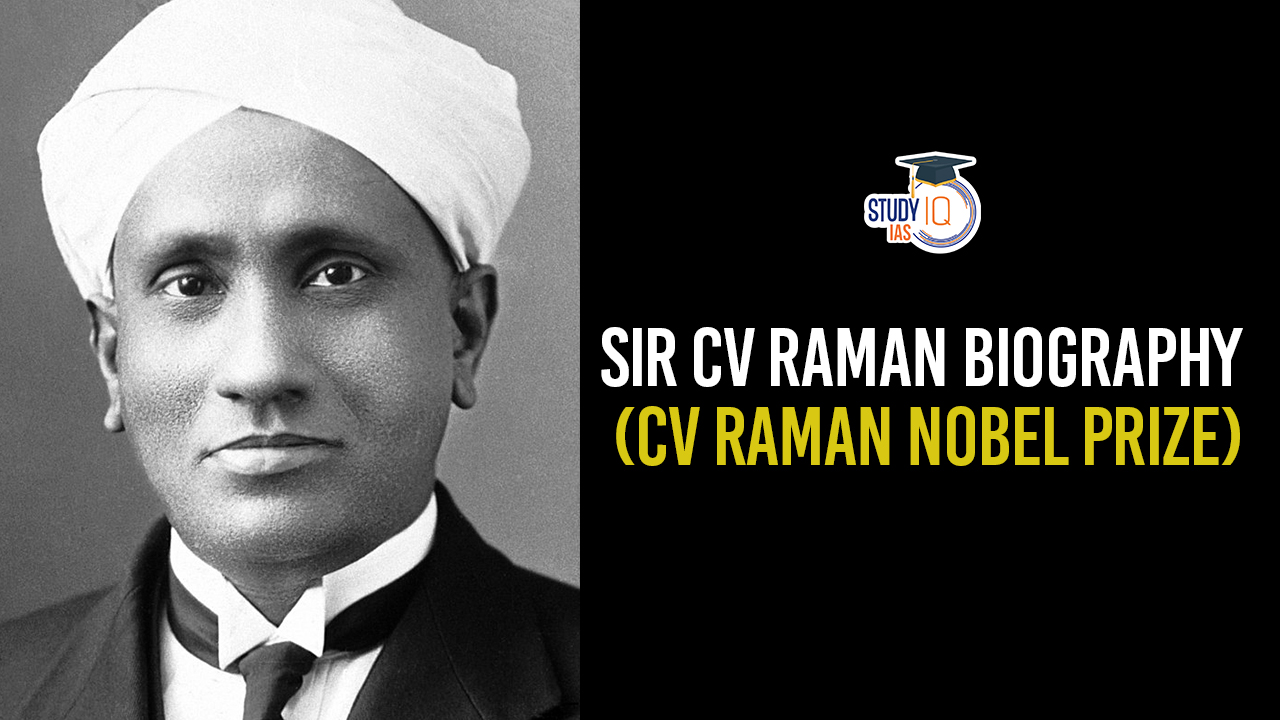Table of Contents
Sir CV Raman Biography
Sir Chandrasekhara Venkata Raman, commonly known as CV Raman, was an eminent Indian physicist whose groundbreaking work in the field of light scattering earned him the Nobel Prize in Physics in 1930. Born on November 7, 1888, in Tiruchirappalli, Tamil Nadu, Raman’s contributions not only significantly advanced the understanding of light and its interaction with matter but also paved the way for modern spectroscopy techniques. His life and work remain an inspiration to scientists worldwide, particularly in India.
Sir CV Raman Biography Overview
| Category | Details |
| Full Name | Sir Chandrasekhara Venkata Raman |
| Date of Birth | November 7, 1888 |
| Place of Birth | Tiruchirappalli, Tamil Nadu, India |
| Nationality | Indian |
| Education | Bachelor’s degree in Physics
Master’s degree in Physics |
| Career | Initially worked in the Indian Finance Department
Joined University of Calcutta as a professor in 1917 |
| Nobel Prize | Awarded Nobel Prize in Physics in 1930 for the discovery of the Raman Effect |
| Raman Effect | Discovered in 1928, the phenomenon where light undergoes a wavelength change upon interaction with matter |
| Contributions | Pioneered modern spectroscopy techniques
Significant work in acoustics, magnetism, and optics |
| Honors | Knighted by the British government in 1929
Numerous awards and honors from scientific societies worldwide |
We’re now on WhatsApp. Click to Join
Sir CV Raman’s Early Life and Education
C.V. Raman was born into a Tamil Brahmin family. His father, Chandrasekhara Ramanathan Iyer, was a lecturer in mathematics and physics. From a young age, Raman showed a keen interest in science and mathematics, often conducting experiments at home. He attended local schools in Tiruchirappalli before enrolling at the prestigious Presidency College in Madras (now Chennai) for his undergraduate studies. After completing his Bachelor’s degree, he pursued a master’s degree in physics, graduating in 1907 with top honors.
Career and Contributions of Sir CV Raman in Science
Following his education, Raman began his career as a government servant but soon transitioned to academic research. He joined the Indian Finance Department as an assistant accountant general in Calcutta (now Kolkata) but continued his scientific pursuits in his spare time. In 1917, he took up a position as a professor of physics at the University of Calcutta, where he conducted the research that would later earn him the Nobel Prize.
Raman’s most significant contribution to science came in 1928 when he discovered what is now known as the “Raman Effect.” While studying the scattering of light in various substances, he observed that when light interacts with molecules, it undergoes a slight change in wavelength. This phenomenon, later named after him, provided crucial insights into the behaviour of light and the molecular structure of materials. The discovery of the Raman Effect revolutionized spectroscopy, allowing scientists to study the vibrational and rotational modes of molecules with unprecedented precision.
In addition to his work on light scattering, Raman made significant contributions to various other areas of physics, including acoustics, magnetism, and optics. He published numerous papers throughout his career, establishing himself as one of the leading scientists of his time. In 1934, he founded the Indian Academy of Sciences and served as its president for several years, further promoting scientific research and education in India.
Awards Honoured to Sir CV Raman
| Awards | Year |
| Royal Society of London membership | 1924 |
| National Science Day declaration | February 28, 1928 |
| Nobel Prize in Physics | 1930 |
| Bharat Ratna | 1954 |
Honourable Works of Sir C V Raman
| Honourable Works & Famous Books | Year |
| Establishment of Indian Journal of Physics | 1926 |
| Publication of “Molecular Diffraction of Light” | 1922 |
| Study of crystal dynamics | 1948 |
Legacy and Honors of CV Raman
C.V. Raman’s contributions to science were widely recognized during his lifetime. In addition to the Nobel Prize in Physics, he received numerous awards and honors from scientific societies and governments around the world. He was knighted by the British government in 1929, becoming the first Indian to receive a knighthood in the field of science.
Beyond his scientific achievements, Raman was also a passionate advocate for science education and research in India. He believed in the importance of nurturing young talent and established several research institutes and laboratories to support scientific endeavors in the country.
Check here: Nobel Prize in Physics 2023
Conclusion
Sir C.V. Raman’s life and work exemplify the spirit of scientific inquiry and discovery. His groundbreaking discoveries in the field of light scattering have had a profound impact on various branches of science and continue to inspire researchers today. As a pioneer of Indian science, Raman’s legacy serves as a reminder of the potential for excellence and innovation within the scientific community. His contributions will be remembered for generations to come, cementing his place as one of the greatest scientists of the 20th century.


 Padma Shri awardee Baiga Tribal Artist J...
Padma Shri awardee Baiga Tribal Artist J...
 Potti Sriramulu Biography and Achievemen...
Potti Sriramulu Biography and Achievemen...
 Sardar Vallabhbhai Patel Biography, Deat...
Sardar Vallabhbhai Patel Biography, Deat...




















